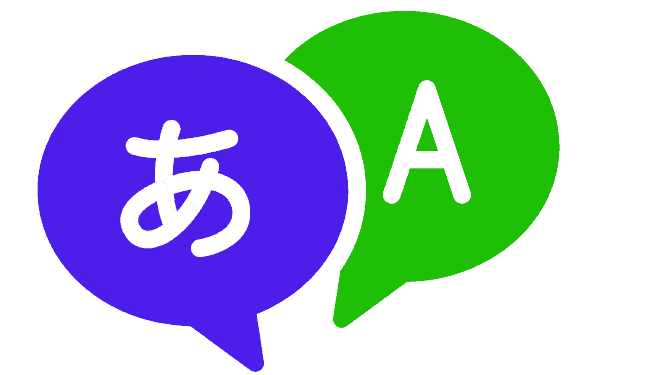Have you ever desired to study a foreign language but have struggled to find the time or the necessary materials? You may have attempted conventional language classes, but the rigid schedules and expensive expenses weren’t suitable for you. Maybe you’ve attempted to study on your own using dictionaries and textbooks, but you struggled to maintain your interest and concentration. You are not alone if this sounds familiar to you.
What if, however, we told you that there is a more effective approach to learn a language? We’re referring about language learning apps, which are a rapidly expanding trend in the field of language acquisition and are completely changing the way individuals learn new languages. In this post, we’ll dive into the advantages of language learning apps. let’s get started!

What are Language Learning Apps?
Language learning apps are mobile applications designed to help users learn a new language. They often include a variety of elements, including language games, speaking and listening exercises, grammar lectures, and vocabulary activities. Several mobile language learning applications customize the learning process for each user by adjusting to their level, learning preferences, and speed using artificial intelligence and machine learning algorithms.
These applications are a convenient and affordable alternative to conventional language learning techniques because they provide convenience, personalisation, diversity, gamification, and cost-effectiveness.
Benefits of Language Learning Apps
| Benefit | Reason |
|---|---|
| 1. Convenience | Learn anytime, anywhere; fits into busy schedules. |
| 2. Personalization | Customized learning; improved learning outcomes. |
| 3. Variety | Wide range of language learning apps available; find the best fit for your needs. |
| 4. Gamification | Fun and engaging learning experience; motivation and commitment to learning. |
| 5. Cost | More affordable than traditional language classes or tutors; accessible to more people. |
1. Convenience
Comparing language learning apps to conventional language learning techniques, they provide an unmatched level of ease. Here are two reasons why:
Learning Anytime, Anywhere
You can pick up a new language wherever you are, at any time, using language teaching applications. You don’t have to wait for a tutor to show up or drive to a language school. Instead, you can access language lessons and exercises from your smartphone or tablet, no matter where you are. In other words, you may practice your language abilities and advance your language learning objectives in your free time, such as during your daily commute or while you’re in line.
Fits Into Busy Schedules
Apps for language learning are made to fit with your hectic schedule. You may learn a new language at your own speed and on your own schedule, regardless of whether you have a full-time job, a family, or other obligations.
It’s simple to include language learning into your everyday routine since the majority of language learning apps provide bite-sized courses that you can finish in just a few minutes. You don’t have to worry about getting behind if you need to take a break since you may stop and restart your study at any moment. You have the freedom to study at your own speed and according to your own terms using these applications.
2. Personalization

The capability of language learning software to customize the learning process for each user is one of its main benefits. This is why:
Customized Learning
Language learning apps use artificial intelligence and machine learning algorithms to create a customized learning experience for each user. To design a customised curriculum, they take into consideration elements including the user’s present level, learning style, hobbies, and objectives.
This implies that each user may study independently and concentrate on the topics they need the most assistance with. For instance, if a user has grammatical issues, the app may provide additional grammar challenges and explanations.
Improved Learning Outcomes
The effectiveness of language learning applications may be increased by offering personalized instruction. According to studies, individualized learning promotes information retention and advance more quickly.
Moreover, users’ progress may be tracked so that the curriculum can be adjusted properly while also receiving comments and encouragement. Users’ motivation and engagement may be maintained in this way, which is essential for long-term success in language acquisition. Users may accomplish their language learning objectives using these applications more quickly and successfully than they can with conventional techniques.
3. Variety
Both Android and iOS have a wide range of language learning applications, each with unique features, advantages, and disadvantages. Among others, Duolingo, Babbel, Rosetta Stone, Memrise, and Lingodeer are some of the well-known language-learning applications.
With various lesson formats, teaching techniques, and learning resources, each app provides a distinctive approach to language learning. This indicates that students have a wide range of alternatives to choose from and may locate an app that best meets their learning preferences and objectives.
Learning other languages has never been easier because of the abundance of applications available. There is always an app to suit your requirements, whether you are a beginner or an established student, whether you want to concentrate on speaking, reading, or writing, whether you prefer a gamified approach or a more conventional one.
By experimenting with many applications, students may choose the one that best suits their needs and remain with it for the greatest language learning outcomes. Instead of being constrained to a particular teaching style or strategy, language learners now have the freedom to choose the app that best suits their requirements and interests.
4. Gamification

These programs use gamification to create a fun and engaging learning experience. Here’s how:
Fun and Engaging Learning Experience
Language learning applications incorporate game-like elements like badges, points, and levels to make the process interesting and exciting. Apps may make learning a language more interesting and approachable by introducing aspects of play into the learning process.
Users may monitor their progress, engage in self- or peer competition, and receive incentives for completing lectures and exercises. Due to this, learning a language may seem more like fun than a work.
Motivation and Commitment to Learning
Gamification can also increase motivation and commitment to learning. Making language learning enjoyable and interesting increases the likelihood that students will continue using the language over time. Duolingo leagues are a good example.
Also, they are more inclined to practice consistently and advance in their language learning objectives. Even when presented with complex ideas or demanding tasks, gamification’s incentives and feedback may help keep students motivated and interested. Language learning applications may assist students in succeeding and mastering a new language by making the process enjoyable and rewarding.
5. Cost
The cost of using language learning apps may sometimes be lower than that of hiring a tutor or taking regular programs. Here’s why:
More Affordable Than Traditional Language Classes or Tutors
For students on a tight budget, traditional language lessons and tutors might be incredibly expensive. On the other hand, language learning programs are often more cost-effective and provide a variety of features and courses for free or at a moderate fee.
The cost of a language learning platform is often far cheaper than the cost of a regular language class or tutor, even though some of them demand a subscription to access all features and lessons. Those who may not have the financial means to pay for conventional language lessons or tutors now have wider access to learning languages.
Accessible to More People
Language learning is also more affordable because to the availability of language learning applications to individuals all over the globe. Anybody may start learning a new language by downloading a language study app onto a smartphone or computer with internet connection.
This implies that learning a language is no longer limited to those who can afford to go abroad for language training or who have access to conventional language schools or tutors. Anybody, anywhere, and at any time may utilize language learning applications, increasing accessibility and inclusivity.
Conclusion- Advantages of Language Learning Apps
In comparison to conventional language lessons or tutors, language learning apps have several benefits. They provide a broad range of alternatives, are easy and customizable, involve gamification, are more economical, and are more widely available.
In conclusion, language apps might be a fantastic choice to take into consideration if you’re trying to learn a new language. They provide an exceptional and efficient approach to learn a new language with the advantages of convenience, personalisation, diversity, gamification, and affordability. There are language learning apps available that may assist you in achieving your language learning objectives, regardless of your level of proficiency.
The last piece of advice we have for language learners is to test out a few different applications to see which one best suits their requirements. With so many choices, it might be beneficial to try out several applications to discover one that suits your learning preferences and language learning objectives. Happy learning!
FAQs
Convenience, personalisation, diversity, gamification, and cost-effectiveness are a few benefits of language learning applications. The lack of cultural immersion, limited speech practice, and possible distractions from other applications or device alerts are some drawbacks.
Some learners, particularly those who prefer a self-paced and participatory learning style, may find language learning applications to be useful. Nevertheless, depending on personal learning preferences, language objectives, and the quality of the app’s features and content, its efficacy may differ.
Your specific requirements and preferences will determine which language learning software is perfect for you. Duolingo, Rosetta Stone, Babbel, and Memrise are a few of the well-known language-learning applications. Try out a few different applications to see which one best suits your learning preferences and language learning objectives.
Indeed, for some students, language learning applications may be successful. Their usefulness, however, may vary depending on a number of variables, including the caliber of the app’s features and content, individual learning preferences, and language learning objectives. It’s critical to use such apps within a thorough language learning strategy that also makes use of other tools like textbooks, courses, or language exchange programs.

Meet Bill, a French language teacher and blogger who specializes in testing various language learning apps. He has been teaching French for nearly 4 decades and holds a Bachelor’s degree from Manhattanville College. With a passion for technology and how it can enhance language learning, Bill has spent years testing and reviewing different language learning platforms. His blog provides valuable insights into the pros and cons of each app, as well as tips for language learners of all levels.
